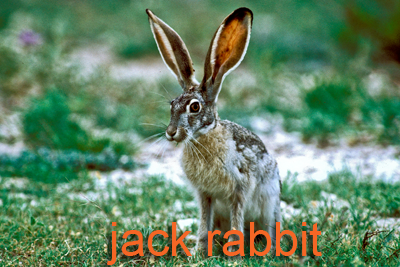
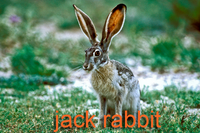
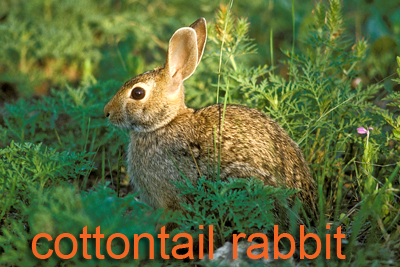
Non-game animals include (but are not limited to) the following: armadillos, bobcats coyotes, flying squirrels, frogs, ground squirrels, mountain lions, porcupines, prairie dogs, rabbits, and turtles. There is no closed season on these animals and a valid hunting license is required. They may be hunted at any time by any lawful means on private property. Public hunting lands may have restrictions. The take of any nongame species for commercial purposes (sale, offer for sale, barter, or exchange) from public lands or waters is unlawful. Note: Take precautions when handling Armadillos, as they could possibly be carrying leprosy.
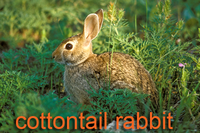
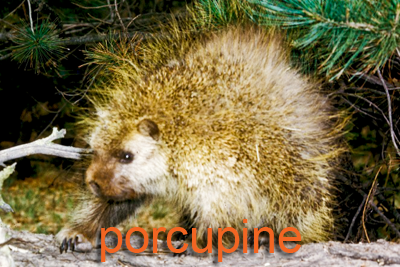
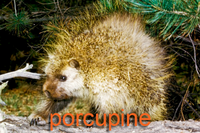
Table of Contents
Bobcat
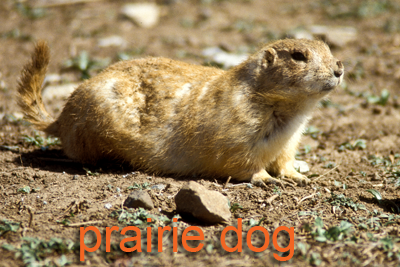
The Bobcat, Lynx rufus, is a medium-sized, reddish brown or grayish cat. Its ears usually have small tufts at the tips, and its fur is longer on the sides of its head than on the rest of its body, forming a ruff. They have a short tail, long legs, and large feet.
Bobcat pelts sold, purchased, traded, transported or shipped out of state must have a pelt tag (CITES) attached. A pelt tag must be attached prior to being transported or shipped out of this state. Pelt tags may be obtained from any permitted bobcat pelt dealer, or TPWD Regional & Field Law Enforcement Offices. For additional information contact TPWD (800) 792-1112, menu 7, option 9 or (512) 389-4481.
Coyote
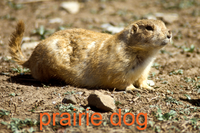 Coyotes,Canis latrans Say, are slender, dog-like carnivores, common throughout Texas. They have adapted easily to the expansion of human communities into their habitat and can occasionally be found in urban and suburban neighborhoods. Coyotes may live alone or in small “packs” of up to 6 individuals. Coyotes are well known for their calls. They howl (a high quavering cry) and emit a series of short, high-pitched yips. Howls are used to keep in touch with other coyotes in the area.
Coyotes,Canis latrans Say, are slender, dog-like carnivores, common throughout Texas. They have adapted easily to the expansion of human communities into their habitat and can occasionally be found in urban and suburban neighborhoods. Coyotes may live alone or in small “packs” of up to 6 individuals. Coyotes are well known for their calls. They howl (a high quavering cry) and emit a series of short, high-pitched yips. Howls are used to keep in touch with other coyotes in the area.
Coyotes are opportunistic feeders and will eat almost anything, alive or dead, garbage, meat, fish, vegetables, berries or whatever they can find easily. Their natural diet consists mostly of rabbits, rodents and carrion. Coyotes are very wary of humans, however they can become accustomed to humans especially if they are fed. Since any wild animal that has no fear of humans can become dangerous, it is important to not feed them at all. Don’t leave pet food out over night, secure lids to garbage cans and keep small pets inside unless supervised. They do not normally pose a threat to livestock, however hungry coyotes may occasionally take small domestic animals or poultry.
Live coyotes are currently under a statewide rabies quarantine that prohibits them from being transported or sold in Texas (see exceptions). For information on the rabies quarantine, visit the Texas Department of State Health Services Infectious Disease Control Unit Web site.
Mountain Lion
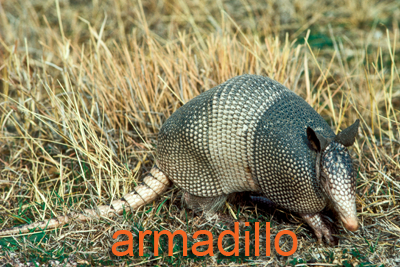 The mountain lion, Puma concolor, also known as cougar, puma and panther, has been an integral part of the Texas fauna for thousands of years, The Mountain Lion has the widest distribution of any wild cat, from Canada to South America. Formerly distributed throughout North America, the Mountain Lion is now found mostly in the remote areas of the western U.S., as well as western Canada and much of Mexico. A small population still exists in southern Florida, where the species is considered endangered. In Texas, the Mountain Lion is found throughout the Trans-Pecos, as well as the brush lands of south Texas and portions of the Hill Country. Sighting and kill reports indicate that Mountain Lions now occur in more counties than they did 10 years ago and appear to be expanding their range into central Texas.
The mountain lion, Puma concolor, also known as cougar, puma and panther, has been an integral part of the Texas fauna for thousands of years, The Mountain Lion has the widest distribution of any wild cat, from Canada to South America. Formerly distributed throughout North America, the Mountain Lion is now found mostly in the remote areas of the western U.S., as well as western Canada and much of Mexico. A small population still exists in southern Florida, where the species is considered endangered. In Texas, the Mountain Lion is found throughout the Trans-Pecos, as well as the brush lands of south Texas and portions of the Hill Country. Sighting and kill reports indicate that Mountain Lions now occur in more counties than they did 10 years ago and appear to be expanding their range into central Texas.
Retiring and shy by nature, and largely nocturnal by habit, the mountain lion is seldom seen in its native haunts. The diet of the mountain lion consists almost entirely of animal matter; but, like the domestic cat, it occasionally eats grasses and other vegetable matter. Deer and javelina are major food items; however, lions have been known to take elk and bighorn sheep as well as a variety of smaller animals. Contrary to popular opinion, mountain lions rarely use caves as dens, preferring cliff crevices, overhanging ledges or enlarged badger burrows instead. If you are in an area where lions are known to be present, hunt with others, not alone.
Turtles
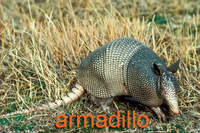 Turtle, tortoise or terrapin? Many people get confused by these terms, often using them interchangeably. Texas has a single species of tortoise, the Texas tortoise (Gopherus berlanderi) and a single species of terrapin, the diamondback terrapin (Malaclemys terrapin). All of the remaining 28 species of the order Testudines found in Texas are called “turtles.”
Turtle, tortoise or terrapin? Many people get confused by these terms, often using them interchangeably. Texas has a single species of tortoise, the Texas tortoise (Gopherus berlanderi) and a single species of terrapin, the diamondback terrapin (Malaclemys terrapin). All of the remaining 28 species of the order Testudines found in Texas are called “turtles.”
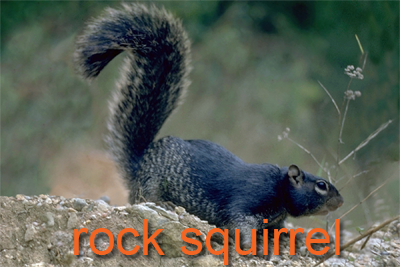
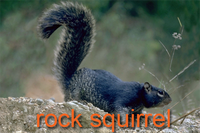
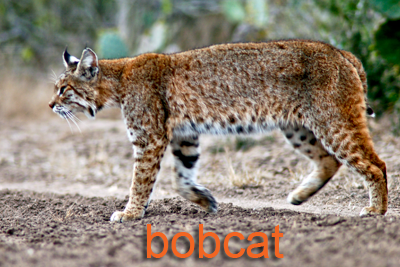
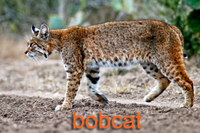

Take or possession of any species of turtle for commercial activity is unlawful.
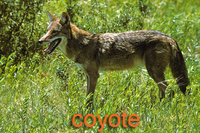
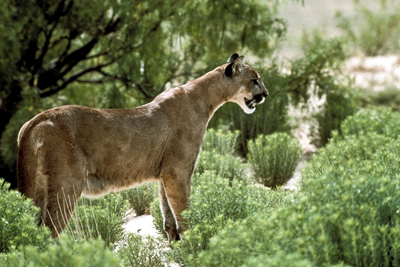
No person may possess a diamondback terrapin at any time.
Frogs
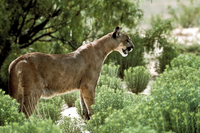
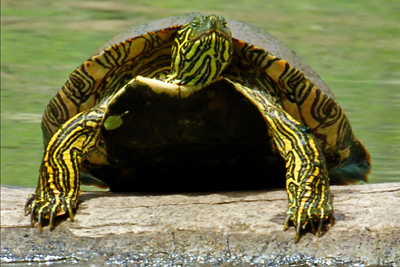
There are 42 species of frogs and toads in Texas (4 species are threatened and 1 species is endangered).
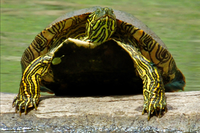
Bullfrogs are the largest frog in North America and the frog used by most for food. They are frequently found along the water’s edge and are most active at night. They are hunted usually with a gig, prized for their meaty legs.










































